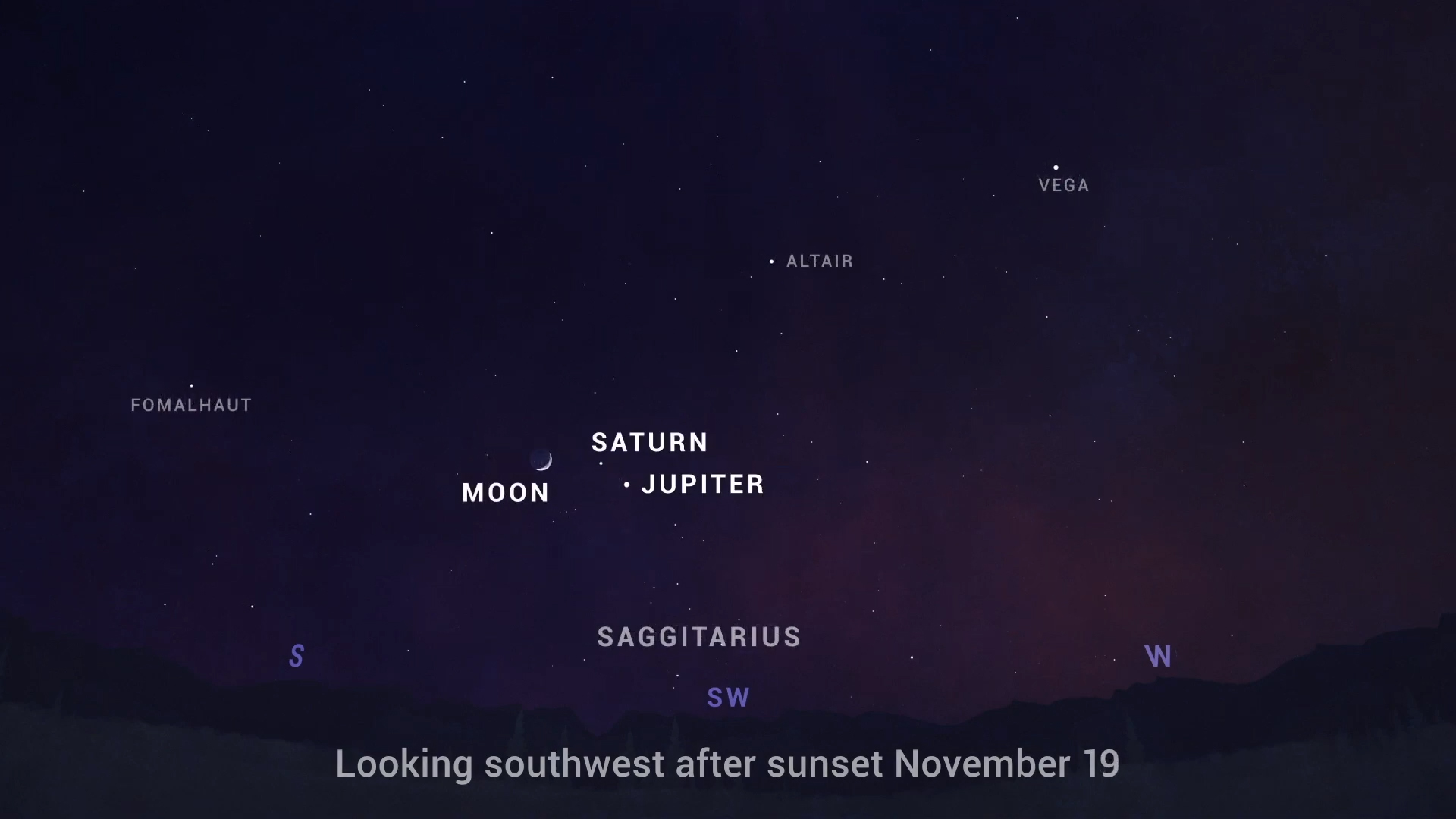What’s Up: November 2020 Skywatching Tips from NASA
| Credit | NASA/JPL-Caltech |
|---|---|
| Historical Date | November 1, 2020 |
| Language |
|
Transcript
What's Up for November? Seeking out the Pleiades, the Moon with Jupiter and Saturn, and understanding Earthshine.
Evenings in November are a good time to start looking for the Pleiades. This bright cluster of stars is a well-known sight to most stargazers, and is best enjoyed in the cooler fall and winter months in the Northern Hemisphere.

The Pleiades is what's known as an open star cluster – it's a loosely bound grouping of a couple thousand stars that formed together and are slowly drifting apart over time. A handful of the brightest stars in the cluster are visible with the unaided eye, and with binoculars or a telescope, you can see hundreds.
Astronomers estimate the age of the cluster is only about 100 million years. It's located a bit more than 400 light years away. The brightest stars in the Pleiades are many times brighter than our own star, the Sun. In fact, if you were to visit the Pleiades and look homeward, you wouldn't even be able to see the Sun without a small telescope.
On cool November evenings, look for the Pleiades in the east in the couple of hours after dark. The cluster rises to its highest point around midnight. You can also enjoy an early morning view of the Pleiades near the Moon, before dawn on November 2nd.
On November 18th and 19th, enjoy a lovely crescent moon near Jupiter and Saturn after sunset. The two planets have been brilliant highlights of the night sky for much of this year, and are now getting closer together in advance of their super close pairing in mid-December. More about that next month, but for now, be sure to watch as they draw a little nearer to each other each week.

You may have marveled at how brightly a full moon can light up a nighttime landscape, but have you noticed how Earth can illuminate the night side of the Moon? This eerily beautiful glow is called Earthshine. It's sunlight that's been reflected off of Earth, then bounced off the Moon and back to our eyes.
Earthshine is easiest to observe in the few days before and after the new moon, when the part of the Moon that's directly lit by the Sun appears as a slim crescent. This is partly because there's less of the bright, sunlit surface to compete with the dimmer Earthshine-lit portion, and partly because the phases of Earth and the Moon are complimentary: when the Moon is a slim crescent in our sky, Earth seen from the Moon looks nearly full.
Occasionally, NASA spacecraft use this phenomenon to make the night side of other planets and moons visible – for example Saturnshine on Saturn's moons and ringshine lighting up Saturn itself, as seen by NASA's Cassini spacecraft.

The best times to observe Earthshine in November are on the 17th through the 20th, following sunset, and before dawn on the 9th through the 12th. And for an added treat, on the 12th, the Moon, illuminated by both sunshine and Earthshine, will appear just above the "Morning Star," Venus.
Here are the phases of the Moon for November.

You can catch up on all of NASA's missions to explore the solar system and beyond at nasa.gov. I'm Preston Dyches from NASA's Jet Propulsion Laboratory, and that's What's Up for this month.
